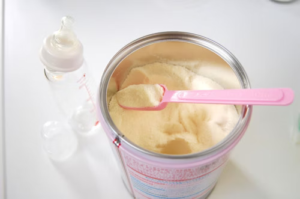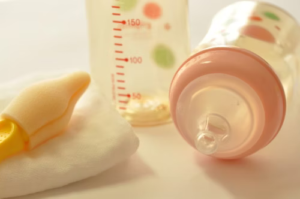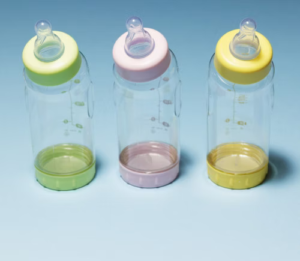When a baby is born, a baby bottle is necessary. You want to choose a good one to help develop the muscles around the baby’s mouth. But did you know that there are actually many different types of baby bottles? Here are some tips on how to choose a baby bottle that you should know before your baby is born. Make sure to choose a baby bottle that suits your needs.
What to consider when choosing a baby bottle?
I’m planning to breastfeed, so I don’t need a baby bottle! Even if you think so, it’s reassuring to know a little about baby bottles. Baby bottles are very useful when you go out or when your baby is sick. Baby bottles
come in a variety of different shapes and sizes, as well as materials and nipple shapes. These differences may seem trivial to adults, but some babies may not drink milk if the bottle doesn’t suit them.
Learn about the characteristics and types of baby bottles, and how to choose them, to help you raise your child without stress.
Types of baby bottles and how to choose them

There are a wide variety of baby bottles on the market from various manufacturers, so you may be confused when you go to the store to buy one. Here, we will explain the types of baby bottles and how to choose them, based on the following three points.
material
Baby bottles are mainly made of two materials: glass and plastic.
Glass baby bottles are resistant to heat and sterilization, and are less likely to get scratched. However, they are heavier than plastic bottles, and will break if dropped. For this reason, they are best used indoors, such as during the newborn stage when babies do not go out much.
On the other hand, plastic baby bottles are light and easy to carry, and will not break even if dropped. They are best to take with you when you go out. However, they are more easily scratched than glass, and are more likely to retain odors and stains. Depending on the material, there may be concerns about environmental hormones, so be sure to check carefully when purchasing.
Size
The size of the baby bottle is determined by the capacity. Although it depends on the manufacturer, the smallest ones are 70-80ml, while the largest ones can go up to 240ml. Choose a bottle based on how much your baby drinks.
When your baby is a newborn, they only drink a small amount at a time, so a small bottle of 120ml-160ml is sufficient, but as they get older, they will drink more. Once they are 2-3 months old, get them a 200ml or 240ml bottle.
Small bottles that you no longer use can also be used to drink juice or barley tea.
Functionality
Baby bottles these days have a wide variety of functions. There are so many different types that many mothers may be confused, but if you go to a store, the staff will be happy to explain in detail to you.
- Breastfeeding Support
- Maintaining proper posture when drinking
- Something that produces a lot of milk
- Something that makes you chew well and produces milk
As you can see, there are many types of baby bottles. Choose the appropriate one based on your baby’s likes and dislikes and the baby’s developmental stage. It’s also a good idea to have multiple baby bottles depending on the purpose and frequency of use.
Types of nipples and how to choose them

There are also several types of baby bottle nipples, depending on the material and the shape of the hole. This is the part that comes into direct contact with the baby’s mouth, so if it is not compatible, the baby may not be able to drink milk properly. Try out several types and find the nipple that is easiest for your baby to drink from.
material
Baby bottles are mainly made of two types of materials: isoprene rubber and silicone rubber. Some manufacturers also have bottles made from natural rubber, but the variety of products is limited, so they may be hard to find in local stores.
Isoprene rubber is a soft, elastic material. It feels similar to a mother’s nipple and is easy for babies to drink from, but it is not heat resistant.
Silicone rubber, on the other hand, feels harder and is more durable than isoprene rubber. Some manufacturers offer a choice of different hardness levels. However, because it is hard, it can be slippery and some babies may find it difficult to put in their mouths.
Hole Shape
There are several different shapes and sizes of bottle holes.
- Round hole: From newborn to around 3 months old. Choose a bottle with a small hole while your baby is drinking less.
- Three-cut: The Y-shaped cut is distinctive. Can be used from 2 to 3 months of age when the baby is used to drinking. The amount of milk dispensed changes depending on how the baby drinks.
- Cross-cut: Characterized by an X-shaped cut. Can be used from 6 months of age. Suitable for babies with stronger suction power.
You may want to try multiple types depending on your baby’s sucking ability and how much milk they drink.
Use different baby bottles depending on the purpose

As you can see, there are many different types of bottles and nipples. Choose a bottle not only based on color and design, but also on your baby’s developmental stage and compatibility.
Your baby may refuse the bottle, so in that case, try changing the nipple and repeat the trial and error process. It is also recommended to use multiple types depending on the time of year and the situation.
